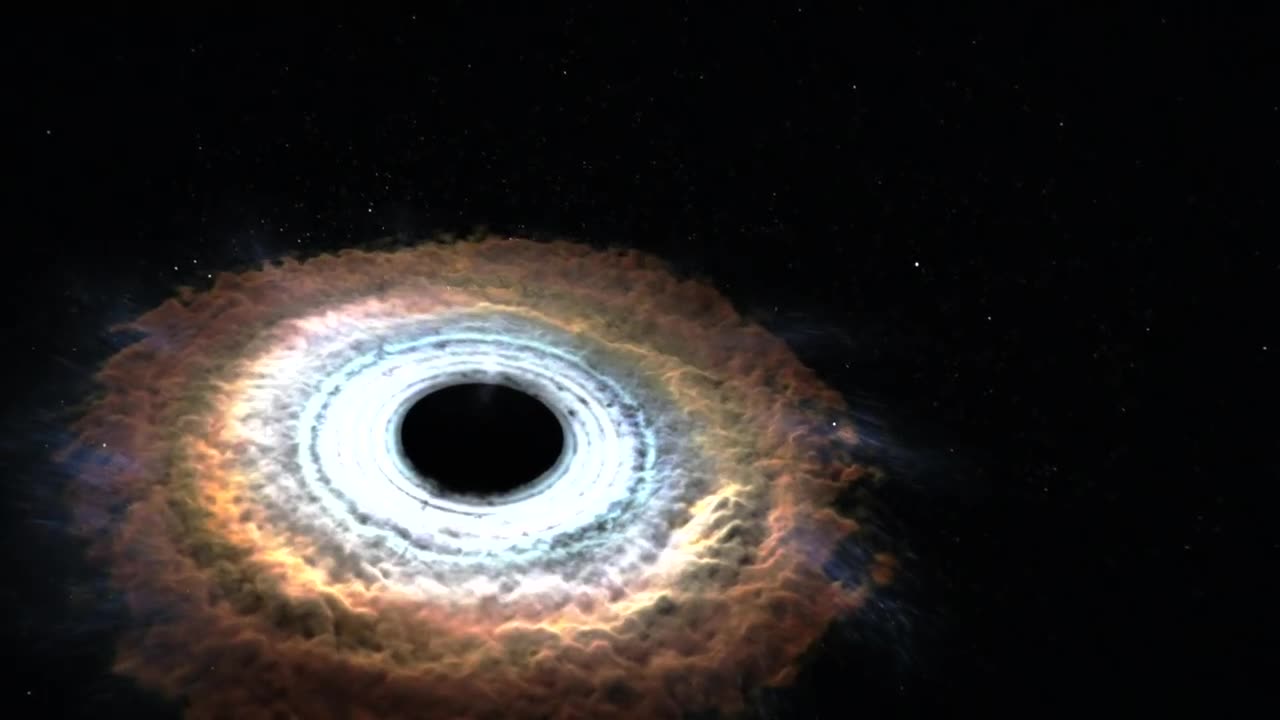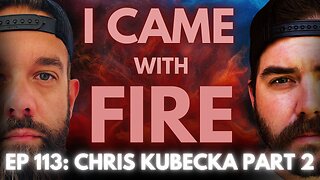Premium Only Content

Black Hole 2023 Nasa Short Documentary
Nasa
Search NASA.gov
NASA TV
MORE STORIES
Black HolesArtist illustration of the tidal disruption ASASSN-14li.
Oct 22, 2015
Destroyed Star Rains Onto Black Hole, Winds Blow It Back
Artist illustration of the tidal disruption ASASSN-14li.
Artist illustration of the tidal disruption ASASSN-14li.
Credits: NASA/CXC/U. Michigan/J. Miller et al.; Illustration: NASA/CXC/M. Weiss
Read full caption
New details about what happens when a black hole tears apart a star have been gathered by a trio of orbiting X-ray telescopes, giving scientists an extraordinary opportunity to understand the extreme environment around a black hole.
When a star comes too close to a black hole, the intense gravity of the black hole results in tidal forces that can rip the star apart. In these events, called “tidal disruptions,” some of the stellar debris is flung outward at high speeds, while the rest falls toward the black hole. This causes a distinct X-ray flare that can last for a few years.
NASA’s Chandra X-ray Observatory, Swift Gamma-ray Burst Explorer, and ESA/NASA’s XMM-Newton collected different pieces of this astronomical puzzle in a tidal disruption event called ASASSN-14li, originally discovered in an optical search by the All-Sky Automated Survey for Supernovae (ASAS-SN) in November 2014.
The event occurred near a supermassive black hole estimated to weigh a few million times the mass of the sun. The black hole is located in the center of PGC 043234, a galaxy that lies about 290 million light years from Earth. This makes this event the closest tidal disruption discovered in a decade.
“We have seen evidence for a handful of tidal disruptions over the years and have developed a lot of ideas of what goes on,” said Jon Miller of the University of Michigan in Ann Arbor, who led the study that is described in a paper published in the latest issue of Nature. “This one is the best chance we have had so far to really understand what happens when a black hole shreds a star.”
After the star is destroyed, the black hole’s strong gravitational force pulls most of the remains of the star toward it. This infalling debris is heated to millions of degrees and generates a huge amount of X-ray light. Soon after this surge of X-rays, the amount of light decreases as the material falls beyond the black hole's event horizon, the point beyond which no light can escape.
Gas often falls toward black holes by spiraling inward in a disk. But how this process starts has remained a mystery. In ASASSN-14li, astronomers were able to witness the formation of such a disk
-
 1:07:10
1:07:10
Jeff Ahern
1 hour ago $0.54 earnedThe Saturday Show with Jeff Ahern
4.76K3 -
 LIVE
LIVE
AyeDeon
4 hours ago1st Time on Rumble(Multistream)
203 watching -
 35:21
35:21
Tactical Advisor
3 hours agoNew Gun Unboxing | Vault Room Live Stream 028
21.6K5 -
 1:25:20
1:25:20
Michael Franzese
20 hours agoAre We Headed for Collapse? War, Riots and Political Tension | LIVE
43.2K62 -
 LIVE
LIVE
JdaDelete
3 hours ago $0.33 earnedDuke Nukem 3D - Sega Saturday
90 watching -
 21:48
21:48
World2Briggs
15 hours ago $0.86 earned10 Towns Almost Begging People To Buy A Cheap Home
11.5K4 -
 21:46
21:46
marcushouse
7 hours ago $0.82 earnedSurprising changes to Starship Super Heavy! Why are they doing this?
15.9K4 -
 1:53:33
1:53:33
Squaring The Circle, A Randall Carlson Podcast
5 hours agoGreat Pyramid's Big Void is Finally Being Opened ft. Matt Beall - Squaring The Circle
12.7K1 -
 1:55:20
1:55:20
I_Came_With_Fire_Podcast
14 hours agoIRAN Tried to KILL HER for HACKING Mass SURVEILLANCE Of Women
37.1K4 -
![[ Sabotage Saturday ] Tekken 8 and CHiLL](https://1a-1791.com/video/fww1/0c/s8/1/r/W/j/T/rWjTy.0kob.1-small--Sabotage-Saturday-Tekken-8.jpg) 2:17:59
2:17:59
CHiLi XDD
5 hours ago[ Sabotage Saturday ] Tekken 8 and CHiLL
24.8K1